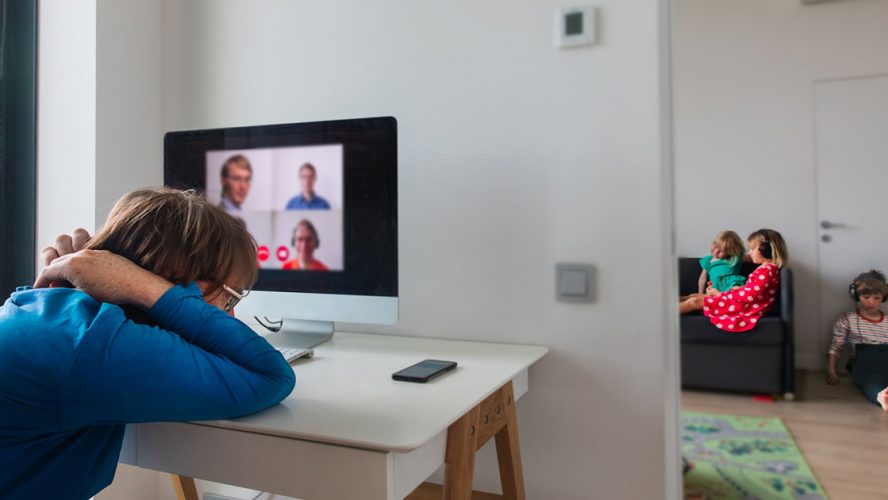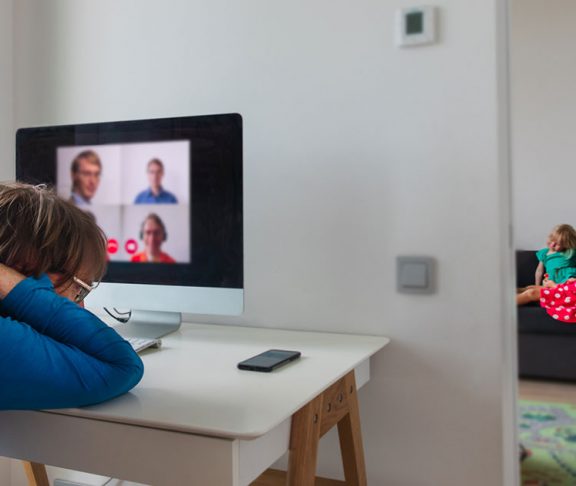
Gary Ware
Founder, Breakthrough Play
When the pandemic forced employees to work from home, it had an unfortunate side effect on the workforce.
No longer able to grab coffee or pop into the office to share information, colleagues attended more meetings on Zoom and sent more emails to do business and stay connected. Unfortunately, that has led to longer workdays — almost an extra hour each day, according to the National Bureau of Economic Research.
And that’s only part of it. Add isolation on top of long workdays and you’ve got employees mired in loneliness, stress, and burnout.
All is not lost, however. Even with employees stuck at home, it’s still possible to actively engage them. In fact, Gallup found that an engaged workforce is not only happier, leading to reduced turnover, but also results in improved customer outcomes and greater profitability.
So how do you engage remote employees? One of the easiest ways to do so is through purposeful play.
The road to engagement
You may associate play with children, but it’s equally beneficial for adults, too. You’ve probably heard that play stimulates neurochemicals, such as oxytocin and serotonin, but it’s more than that.
Play is any activity that offers the player a sense of engagement and pleasure. Just being in the moment is more important than any desired outcome.
For working adults, purposeful play helps create an environment that sparks creativity and energizes people. That environment enables them to think on their feet, listen to ideas without judgment, and feel safe, according to a number of peer-reviewed studies.
At the same time, it reduces stress and can improve your coping skills.
There are three easy ways to introduce purposeful play into the typical workday and engage employees:
1. Create work/home boundaries like Mr. Rogers
Before we began working remotely, our commute to the office, however irritating, allowed many of us to transition into work mode. As we navigated lane changes, we thought about and planned our day ahead. It was an important ritual, where we had time to cogitate.
That creative time has vanished. Now we open the laptop as soon as we’ve poured our coffee and before you know it, we’re pulled into the latest work crisis.
Instead of jumping right into work, suggest to your employees that they create playful new rituals to mark the time before work begins and once the day is done. For example, employees who go on walks, work out, do yoga, or engage in some other fun, physical activity that stimulates the brain will be in a better head space for the workday.
Another fun way to delineate personal life from work life is pulling a Mr. Rogers. He would exchange his jacket for a sweater and his loafers for sneakers after coming in the door.
The point is to be intentional with these new rituals. Think about how you want to feel — whether it’s at peace or super-psyched to face the day — and then figure out what activities can manifest that feeling.
2. Make meetings more effective
Every meeting should be intentional. What do you want to solve by gathering this group of people? In some situations, it may not be necessary to meet at all and instead simply send out a text or email to participants.
When meetings are necessary, however, here’s how you can energize and engage participants:
- Playful check-ins: With Zoom fatigue and lagging attention spans, extra chit chat at the beginning of meetings may seem frivolous and a waste of time. To be efficient, meeting facilitators often cut to the chase. But like the commute mentioned previously, those conversations had a purpose. They helped us connect and feel less isolated. While I’m not suggesting you make mindless small talk, you could try a playful check-in of Red, Yellow Green, in which participants indicate in a Zoom chat what color — red, yellow, or green — aligns to their emotions. Red could mean overwhelmed: someone is not feeling excited, but still present. Yellow could mean challenged: someone feels alright but could be better. Green could mean feeling energized and ready to go. Red, Yellow, Green is a fun way to find out how people are feeling at that moment. And it can encourage discussion that leads to problem-solving and creativity.
- Meeting mash-ups: Not every meeting has to have the same format with the same talking heads and boring PowerPoint presentations. An HBR article on energizing remote teams suggests changing up weekly meetings. For example, Mondays might focus on performance (e.g., what are we doing this week? how can we help each other?). Tuesdays through Thursdays could be one-on-ones with individual team members. And Fridays could encourage the team to reflect on the week and assess what went well. By mixing up meeting formats, you can keep meetings fresh and stimulate conversation and ideas.
- Virtual brainstorming: To supercharge creativity, organize brainstorming sessions with employees from different teams and departments. Such interdisciplinary collaborations encourage participants to learn different perspectives and challenge their long-held ideas.
3. Energize everyone, every day
That’s a central leadership principle at the LEGO Group, and it’s worth emulating. To motivate employees, set up competitions, divide long projects into sprints, get people to share success stories, or cut tumbleweed projects.
You can try two other options as well:
- Stimulating breaks — Encourage employees to take breaks that stimulate their creativity, rather than sitting in front of a screen checking social media or the news. They could try puzzles, play the guitar, spend a few minutes in the garden, or play games, which have been shown to alleviate stress.
- Wellness programs. You might also re-imagine your company wellness programs. For example, FitPros is a virtual wellness program designed to get remote employees moving, from virtual yoga, to cooking demos and art therapy.
However you decide to energize employees, what matters most is that they do something every day.
Rise to the engagement challenge
Engaging employees has always been a challenge. The pandemic has simply amplified the problem. But now it’s clear how great an impact the little things — the daily commute, coffee with co-workers, office drop-ins — had on the workforce. It gave them time to think, to share ideas, and to connect with others.That knowledge has given us an opportunity to be mindful about everyday business practices. By incorporating purposeful play, you can create an engaging environment that will foster high-performing teams, whether those teams are remote or, as will happen eventually, back working in the office.

